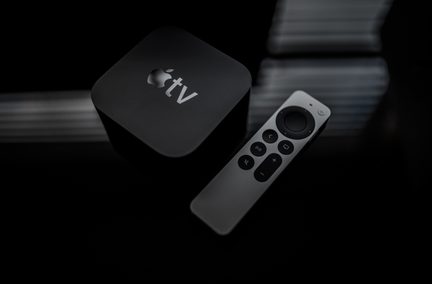The Benefits of Streaming
Sep 14, 2021 | Home Technology, Wi-Fi
Cable and satellite television paved the way for new viewing options as channel selections broadened and movies that traditionally were only shown in theaters became available at home. Today, both are quickly being replaced by streaming services that give subscribers even more options than ever imagined.
How has streaming changed the viewer experience from the old days?
Less Expensive Than Cable
Depending on how many streaming services you subscribe to, your monthly bill can be anywhere from a tenth of your previous cable bill to about the same as you used to pay. But you would be hard-pressed to pay more than you did before you cut the cord. And with the rise in cable prices over the last several years, that gap is widening. As a result, many former cable subscribers have ditched cable and satellite and now only watch content on broadcast television or through a streaming service to save money. But the lower cost is only one of several advantages of this modern technology.
Custom Content

Unlike broadcast or cable television that feed you a pre-determined lineup and schedule, streaming services let you choose what you want to watch and when from a spectrum of offerings. For example, if a program aired at 8:00 Friday night in the pre-streaming days, you had to make time to watch the original broadcast or set your DVR or VCR (remember those?) to record it. With many streaming services, however, you can watch Friday night’s show whenever you want. Got time on Sunday to catch up? Hit the couch and grab the remote.
Also, the more you watch, the better the service understands what you like. The algorithms learn your viewing habits and suggest similar content to what you already watch, improving your overall viewing experience.
More Reliable Than Satellite and Antenna
When is the one time most people want to cozy up and watch a movie? When it’s storming outside. When is the one time it’s hardest to get good reception from an antenna or satellite? When it’s storming outside. Streaming services, on the other hand, work off the internet connection, which directly connects to the home with no interference, so they are more reliable than satellite or antenna.
Fiber optic internet cables also have one added benefit over copper cables: protection from electrical interference because they don’t use electricity to send and receive signal, so you get a clearer picture, protected from the outside environment.
Pause and Replay
Need more popcorn in the middle of a movie? Watching broadcast television, you’ll miss a scene or two as you race to the kitchen. But not with streaming. Hit pause, grab a refill, and resume when you get back without missing anything important. Take your time. It’ll still be there.
Want to see the same movie again? Cue it up and start over from the beginning, just like last time. For many services, such as Netflix and a selection of Amazon Prime titles, there is no extra charge to watch a show or movie as many times as you want.
Parental Controls

Many streaming services let you set up multiple profiles to serve age-appropriate content and restrict access to adult profiles. For example, you can set up a separate profile for each person in the household, allowing parents peace of mind knowing the kids are only watching shows they should be watching and not hopping onto Mom or Dad’s profile.
Better Than Standard HD
When HD signal replaced the old analog system, the world woke up to super clear images without the grainy “noise” commonly associated with the old standard-definition television. The sharper 720p resolution became the new standard, impressing viewers accustomed to the older resolution. But soon, 720p moved up to 1080i and then to 1080p as technology advanced.
Naturally, streaming services kept up with the new standards, delivering shows and movies in each subsequent HD format. However, some services have surpassed even the highest broadcast resolutions by introducing 4K (and in some cases 8K) to their offerings. YouTube, for example, allows 8K uploads for the sharpest resolution to date. So be sure you have a great high-speed internet service that supports the higher bandwidth needed so you won’t be stuck in 1080p-land forever.
No Contract or Early Termination Fees
Unlike the old days when satellite and cable TV providers required you to sign an annual contract, streaming services do not require long-term commitments. This means they must consistently offer enjoyable content to keep you coming back month after month. It also means that if you want to leave the service, all you do is click a few buttons and that’s it – no more service.
Want to come back a few months later? Sign right back up. Services typically hold onto your data for a long time, so if you change your mind, your old settings will likely be intact, making it easier to pick up where you left off.
Overall Better Value
Streaming services offer so much more than traditional broadcast or cable television. You’re in control. You pick what you want to watch and when, and you decide which services you want to keep or cut off. And with a great internet connection, you can maximize your viewing experience.
- streaming
- streaming with fiber
- home internet
- netflix
- amazon prime
- hulu
- mybundle





